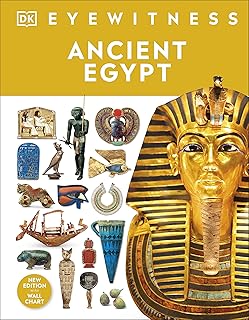A new exhibition at the University of Oxford’s Bodleian Libraries, titled “Tutankhamun: Excavating the Archives,” commemorates the 100th anniversary of the discovery of the tomb of the ancient Egyptian king Tutankhamun at Luxor by British Egyptologist Howard Carter and his team. The exhibition sheds new light on this monumental archaeological find through a collection of dramatically lit images, letters, plans, drawings, and diaries from Carter’s archive.
The captivating images captured by photographer Harry Burton reveal the intricate details of Tutankhamun’s tomb, showcasing the meticulous excavation process that lasted a decade. These visuals challenge the traditional narrative of Carter as a lone hero, emphasizing the significant contributions of the skilled Egyptian workers who played a crucial role in the discovery but have often been overlooked in historical accounts.
Among the photographs displayed is an image of an unnamed Egyptian boy modeling a jeweled necklace from the tomb, symbolizing the fusion of ancient and modern Egypt. Despite several claims by individuals to be the boy in the photo, including Hussein Abd el-Rassul, a member of Carter’s team, none have been definitively verified.
Dr. Daniela Rosenow, an Egyptologist involved in curating the exhibition, highlights the presence of over 50 local workmen employed by Carter, underscoring the collaborative effort involved in the excavation process. The images not only showcase the workers’ vital role but also challenge the prevailing colonial stereotype of archaeological discoveries being attributed to a single individual.
One of the striking images on display depicts Carter’s team delicately opening the doors of a gilded shrine within the tomb, with Carter portrayed in a crouched position alongside his assistant and an unidentified Egyptian figure. This particular photograph played a crucial role in publicizing the tomb’s discovery worldwide and solidifying Carter’s reputation as an intrepid English explorer.
Another poignant photograph captured by Burton features Tutankhamun’s outer coffin adorned with a garland of cornflowers and olive leaves, a poignant detail that has since disintegrated, leaving the image as the only remaining record of this delicate feature.
The exhibition also delves into the scientific examination of Tutankhamun’s mummified body, with British surgeon Douglas Derry making the initial incision. The meticulous documentation of this process, including the involvement of Egyptian colleagues and officials, provides a glimpse into the comprehensive study of the king’s remains.
Among the iconic artifacts discovered in the tomb was Tutankhamun’s solid gold mask, a symbol of the wealth and power of ancient Egyptian royalty. Additionally, detailed drawings by Carter, such as the depiction of the jackal god Anubis, offer insights into the meticulous recording and preservation of the tomb’s contents.
Harry Burton’s skillful use of lighting techniques, as showcased in his photograph of the shrine of the god Anubis, adds a dramatic and eerie dimension to the exhibition, underscoring the significance of lighting in archaeological documentation and storytelling.
As visitors explore the exhibition, they are transported back in time to witness the unfolding of one of the most significant archaeological discoveries in history, offering a fresh perspective on the intricate process of uncovering the treasures of ancient Egypt and the collaborative efforts that made it possible.
📰 Related Articles
- Tragic Discovery of Missing Toddler’s Remains Reveals Heartbreaking Saga of Family Loss and Legal Actions
- Study Reveals AI’s Limitations in Scientific Discovery Creativity
- Secret Tomb Unveiled in Petra Reveals Nabataean Culture
- eBay Report Reveals Fall 2025 Luxury Fashion Trends
- abrdn UK Smaller Companies Growth Trust Reveals NAVs Transparency
📚Book Titles
- Co-Working Revolution: A Comprehensive Guide to Collaborative Workspaces Introduction
- Shadows and Echoes: The Entangled Chronicles of Cursed Artifacts
- Undertones of Healing: Unmasking the Suppressed Power of Alternative Medicine
- Immunization Imprints: A Historical and Contemporary Exploration of Vaccines, Diseases, and Society






